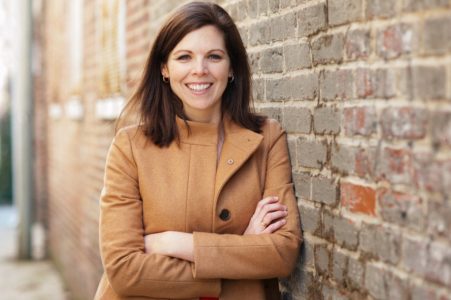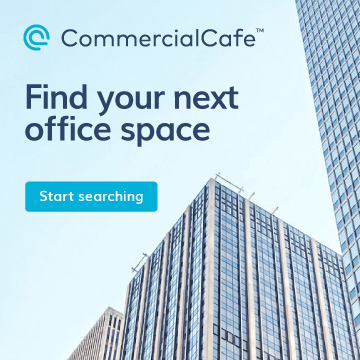Architecture is the result of its time. Building and living styles to which we are now accustomed are, in part, the result of strategies to overcome widespread health threats, among other issues. Outbreaks of the past taught us the importance of creating green spaces within urban centers; engineering and maintaining modern sanitation systems throughout our built environments; and the “architectural hygiene” of brightly lit and well-ventilated indoor spaces. Now, once again, we are entering a period of transformation. While there is still much to clarify with regard to transmission and what safeguards will be most efficient in the long term, some aspects are already clear — the importance of a “green” mindset and prioritizing sustainability in powering our cities, as well as in the ways we zone, build, and clean the air in our urban hubs.
Read on for details on evolving best practices that were recently put forward by the U.S. Green Buildings Council (USGBC) and its global certification body, Green Business Certification Inc. (GBCI). Additionally, we spoke with Melissa Baker of USGBC, on what changes we should expect to see in our buildings, cities and communities for a successful and sustainable adaptation to the new post-COVID normal.
New LEED, GBCI Guidance in Response to COVID-19
The USGBC has become almost synonymous with responsible urbanism and real estate development. In fact, since its inception in the early 1990s, the USGBC’s Leadership in Energy and Environmental Design (LEED) program has evolved from a single standard for new construction to a comprehensive system that acknowledges the interrelation between design, construction, maintenance and operation of our built environment. What’s more, meeting these standards and earning a LEED certification is highly regarded and recognized worldwide.
Naturally, the USGBC has risen to the challenges currently presented by the pandemic and presented new tools to assist the industry in responsibly navigating the changes. Specifically, guidelines released in response to COVID-19 include new pilot LEED credits, as well as new Safety First pilot credits for the SITES and TRUE rating systems accreditations awarded by GBCI.
New LEED Pilot Credits
Four pilot credits were designed to offer guidance in the process of reopening. These offer an outline of best practices that are in alignment with public health and industry guidelines regarding disinfecting, cleaning, re-occupancy of workspaces, plumbing operations and HVAC. These new Safety First credits can be used by certified properties, as well as by projects that are still undergoing certification.
The four credits summarized below — which were released last month as part of the Council’s global economic recovery strategy — are currently available to all LEED 2009, LEED v4 and LEED v4.1 projects.
- Safety First: Cleaning and Disinfecting Your Space — This credit requires the creation and implementation of green cleaning procedures that support worker safety and healthy indoor environments. It prioritizes sustainable options among existing disinfectants and cleaning processes that have been proven to be effective against COVID-19, as well as the importance of training for cleaning personnel and occupant education.
- Safety First: Re-Enter Your Workspace — This option identifies sustainable requirements in behavior and building operations that take precautions against the spread of COVID-19. This tool can be used to plan for returning to the workspace, as well as to evaluate progress after re-entry.
- Safety First: Building Water System Recommissioning — This addresses some of the risks associated with prolonged building closures, such as reduced usage, which can result in stagnant water that is unsafe to use or drink. This pilot credit aims to reduce the risk of exposing building occupants to degraded water quality. As such, it requires the implementation of a water management plan that addresses water quality in the building, coordination with relevant local authorities (such as water and public heath), as well as communication regarding water system activities and possible risks to occupants.
- Safety First: Managing Indoor Air Quality During COVID-19 — This pilot credit builds upon existing requirements for indoor air quality and requires air quality systems to be in operation. In particular, it dictates that responsible parties make adjustments that minimize the airborne spread of COVID-19 by increasing air filtration and the percentage of outdoor air up to 100%, if possible. Additionally, building managers must facilitate a minimum of six feet of physical distance between occupants, as well as comply with other guidelines in line with official recommendations and with the “Re-Enter Your Workspace” credit.
Given the evolving nature of findings on all-things-COVID-19, these credit requirements are, of course, subject to change. The USGBC also welcomes feedback that can be incorporated in future credit improvements and updates.
GBCI Releases New Credits for SITES, TRUE Rating Systems
The GBCI was established in 2008 as the Green Building Certification Institute — now Inc. — to provide independent oversight of LEED certification and the professional credentialing process. The organization has since also undertaken oversight of the WELL Building Standard, the Global Real Estate Sustainability Benchmark, as well as the PEER standard for sustainable, resilient and reliable energy.
To complement USGBC’s Safety First pilot credits, GBCI has also released new credits in support of its SITES and TRUE rating systems. The Sustainable SITES Initiative encourages best practices and clarifies performance measures for the sustainable development of parks, corporate campuses and other green spaces. There are currently 70 certified SITES projects throughout the world. They contribute to a framework that protects ecosystems and wildlife habitat, while also expanding green infrastructure and enhancing landscape resilience.
The TRUE system is designed to change the flow of materials in society so much so that it results in zero waste. Specifically, TRUE outlines processes that consider the entire lifecycle of products used within a facility. As a result, the system ensures support of public health and ecosystems, maximizes the reduction of a business’ ecological footprint, and advances a sustainable economy.
Outlined below are the new GBCI credits. These offer guidelines that assist sustainable landscape development projects — as well as those pursuing zero-waste goals — to maintain their commitments, while also adapting to changes mandated by the pandemic.
- SITES Safety First Pilot Credit — This option recommends the use of the National Recreation and Park Association’s (NRPA) Risk Assessment Tool in updating operations and management plans for outdoor spaces. The plans should address issues like the necessity for proper physical distancing; adapting organized activities, training and protection measures for both staff and the public; signage and communication; and more.
- TRUE Safety First Pilot Credit — This credit is intended to identify and eliminate any adverse health effects on workers associated with waste management activities. Requirements include: the completion of an OSHA-compliant job hazard analysis for all personnel, as well as the examination of all activities pertaining to the handling and management of waste at each facility. Additionally, it also requires the implementation of an updated health and safety plan that identifies any hazard measures that are lacking; offers a thorough and comprehensive training that addresses any language barriers; and complies with local and national COVID-19 guidelines.
Check the full text linked in the abbreviated descriptions above for more information on current credit attainment requirements. Note that these requirements and recommendations are subject to change pending further updates in COVID-related research, as well as feedback provided by pilot credit applicants.
USGBC Insights on Current & Possible Future Adaptation in Our Cities
As the world adapts to what some call a “new normal,” the future state of affairs is not yet clear. While there are some aspects that we can be sure of at this time, much remains to be clarified going forward. For example, how will homes and workplaces change? What are some of the changes that can be immediately implemented? How will architecture and our cities look in the future?
We discussed questions like these with Melissa Baker, senior vice president for technical core at USGBC. See what she had to say below.
Q: Which changes would you consider to be the most cost-heavy for a COVID-related retrofit?
Baker: “Much of what we know right now in preparing and supporting staff to return to buildings starts with providing access to information and the ability to make the right choices to prevent the spread of disease. For example, allowing employees to work from home, if possible. Or, if they are in the office, providing proper PPE, signage, and sinks with soap and water for proper handwashing. It also involves showing people where they need to walk or spacing desks so that social distancing can be maintained.
“Planning for these actions is outlined in our ‘Safety First: Re-Enter Your Workspace’ pilot credit. This credit utilizes a tool published by AIA that includes a checklist of actions. Some examples that could be used have a cost associated with them, such as changing the way spaces are used to provide physical distancing, as well as barriers between individuals. Adding touchless access to open doors [or] activate sinks or elevators will also add some cost.
“After those steps are taken, operations such as utilizing green cleaning to maintain healthy indoor air — while also disinfecting to kill the virus — [are] important steps for occupant and janitorial staff health and wellness as outlined in the ‘Safety First: Cleaning and Disinfecting Your Space’ pilot credit.
“There is a lot of conversation across the industry about ventilation and air filtration and the best way to manage those systems in a way that could help stem the spread of the virus. The public health community is still studying this, so it continues to be an ongoing conversation about what the best path forward should be.
“We’ve outlined several steps that can be taken to enhance ventilation and filtration in the LEED Safety First: Managing Indoor Air Quality During COVID-19 pilot credit that we introduced this month. It includes actions like increasing fresh air and ventilation, and having building teams ensure air quality systems are operating as designed. If a building team determines an HVAC system needs to be upgraded, then they might start to incur higher costs.”
Q: The concept of “building health” was gaining traction even before the pandemic. With the extra incentive of the current situation, do you think building techniques and materials will progress any faster?
Baker: “In times of crisis, we often see innovation spurred. At USGBC, we’ve had to adjust and consider how LEED can support [that], given what we’re facing and what we know, and the design and materials worlds are doing the same thing.
“Health has been a part of LEED and a big part of the green building conversation, in general, especially in the last few years. Part of the discussion now, though, involves looking at what already exists and reinforcing those solutions, while also taking what we’re learning about the virus and finding new pathways to support the market.”
Q: What materials — either structural or decorative — do you consider to be “healthiest”?
Baker: “From a LEED perspective, we have several credits in our Materials and Resources and Indoor Environmental Quality credit categories that focus on both the health of people and ecological health. As an example, this includes the use of low-emitting materials. It’s an important way to reduce concentrations of chemical contaminants that can cause poor air quality and damage health while [also] reducing productivity. LEED outlines strategies [that] building teams can leverage to ensure they’re using materials that best support our health and wellbeing.
“Another aspect of the conversation around buildings and health also includes considering the impact on community health. Buildings are significant contributors of carbon and other greenhouse gases, which increases air pollution. Through LEED, building teams are also focused on how to reduce emissions and prioritize renewable energy sources that aren’t hurting the surrounding community.
“It’s important to also remember, though, that the health conversation isn’t just about the occupant — although that’s a primary part of it. It’s also about considering how the building is positively contributing to the health of the community it’s in.”
Q: Could outdoor offices happen in the near future?
Baker: “Right now, there is a lot of conversation around increasing access to fresh air. The concept of outdoor offices is certainly interesting. There would be a lot of logistical considerations, but when we talk about innovation, we need to be open to out-of-the-box thinking if we want to move forward. Many LEED projects already have access to outdoor spaces, so a natural progression might be looking at how to make those spaces more functional office environments for more people.”
Q: Some research indicates that the virus can survive on surfaces such as metal, cardboard and plastic for several days. Could you give us any insights on possible benefits of smart materials — such as mycelium-based furniture — in this regard? Could they provide an alternative?
Baker: “Based on CDC guidance, disinfection is a best-practice measure for [the] prevention of COVID-19 and other viral respiratory illnesses when considering surfaces. The CDC is still studying transmission and hasn’t released best practices in terms of materials to use.
“To assist commercial spaces, USGBC introduced a new LEED pilot credit called ‘Safety First: Cleaning and Disinfecting Your Space.’ It helps building teams create and implement policies and procedures that follow green cleaning best practices that support health, the environment and worker safety. Unlike the need to develop new vaccines and medical treatments for COVID-19, current disinfectants and cleaning processes are effective against the virus and sustainable options exist.”
Q: Do you see a way to preserve urban density and all the things that have been attractive about it to so many people — such as high walkability?
Baker: “As a society, we’re not likely to move away from urban density, but there will be important lessons we take away from this experience that will inform how we can support health. Our industry is taking a look at how we can better design and build our cities and communities.
“As one example, not only is it a question of walkability, but it also involves looking at our transportation systems, too. In some cities, in order to reopen, they need outdoor dining options, so we’re seeing streets reallocated to support that, which has an impact on transportation. There’s a ripple effect to all this and it’s going to require us to look at design differently.”
Q: Any other insights that you would like to share?
Baker: “There are immediate actions [that] buildings need to take in order to reopen, and LEED is supporting those efforts with four new Safety First credits that address cleaning and disinfecting, re-entry, water systems and indoor air quality. It’s part of our larger economic recovery strategy that’s based on the idea that healthy people in healthy places [are] the fastest way to rebuild a healthy economy.
“Because we’re still learning about the virus, it’s important [that] we have an open dialogue with the industry about what they are experiencing so we can continue to refine our recommendations. USGBC has been a leader in convening industry voices to help inform where we need to go next. We’re continuing that tradition through a series of virtual events this year, including the Healthy Economy Forum, which will take places in August and help us specifically address where LEED and green building need to be focused given the current situation. We’re looking for ideas and encourage the commercial industry to participate.”










